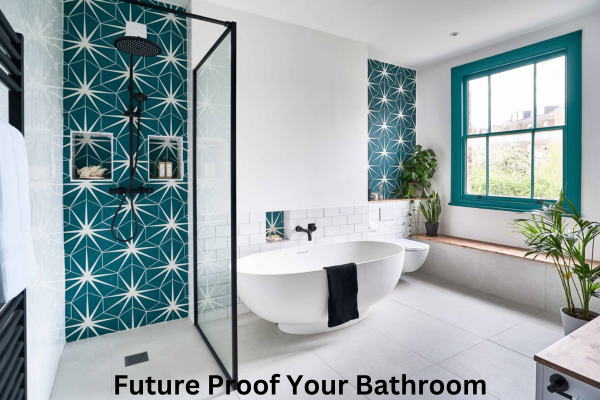
Future-Proofing
Your Bathroom: Design Tips for Long-Term Comfort and Sustainability
The bathroom is one of the most frequently used spaces in
any home, and it is also one of the most subject to wear and tear. When
renovating or designing a new bathroom, it is crucial to consider not only
current needs but also how the space will serve you in the future.
Future-proofing your bathroom involves incorporating elements that enhance
comfort, functionality, and sustainability for years to come. Here are some
design tips to help you create a bathroom that stands the test of time.
Accessibility and Universal Design
One of the essential aspects of future-proofing your
bathroom is ensuring accessibility for all users, regardless of age or ability.
Incorporating universal design principles means creating a space that is usable
by everyone, including individuals with mobility challenges or disabilities.
Features such as low profile shower trays in place of baths, wide access in
shower enclosures, anti-slip tiles, grab bars, and adjustable-height fixtures
such as riser rails in showers can make the bathroom more accessible and
accommodating for all users, both now and in the future.
Smart Storage Solutions
Effective storage is key to maintaining a clutter-free and
functional bathroom. When designing your bathroom, consider incorporating smart
storage solutions that optimize space and organization. Built-in shelves,
recessed cabinets, and vanity drawers with dividers can help maximize storage
capacity while keeping essential items easily accessible. Think about your
current storage needs and anticipate how they might evolve over time, allowing
flexibility for changing requirements.
Energy-Efficient Fixtures and Appliances
In an era of increasing environmental consciousness,
integrating energy-efficient fixtures and appliances into your bathroom can
help reduce water and energy consumption while lowering utility bills. Consider
installing low-flow toilets, and Eco flow showerheads to conserve water without
sacrificing performance. Additionally, energy-efficient lighting fixtures and
programmable thermostats can help minimize energy usage and create a more
sustainable bathroom environment.
Durable and Low-Maintenance Materials
Choosing durable and low-maintenance materials is essential
for ensuring the longevity and ease of upkeep of your bathroom. Opt for
high-quality materials such as porcelain tiles, marble or quartz countertops, and
moisture-resistant bathroom furniture that can withstand daily wear and tear
while remaining aesthetically pleasing over time. Selecting materials that are
easy to clean and resistant to stains, mould, and mildew will simplify
maintenance and prolong the life of your bathroom surfaces. Also how you clean
these products will effect how long they last, use warm soapy water to clean no
harsh abrasives or scourer pads as these will tarnish the finish on these
products.
Flexible Design Elements
When designing your bathroom, prioritize flexibility and
adaptability to accommodate changing needs and preferences. Choose timeless
design elements and neutral colour schemes that can easily be updated with
accessories and accents to reflect evolving styles and trends. Incorporate
modular fixtures and customizable features that can be adjusted or reconfigured
as needed, allowing your bathroom to adapt to different stages of life and
personal preferences.
Conclusion
Future-proofing your bathroom involves thoughtful planning
and consideration of various factors, including accessibility, sustainability,
functionality, and durability. By incorporating universal design principles,
smart storage solutions, energy-efficient fixtures, durable materials, and
flexible design elements, you can create a bathroom that not only meets your
current needs but also remains relevant and functional for years to come.
Whether you are renovating an existing space or designing a new one, investing
in future-proofing measures will ensure that your bathroom continues to serve
you well into the future.

